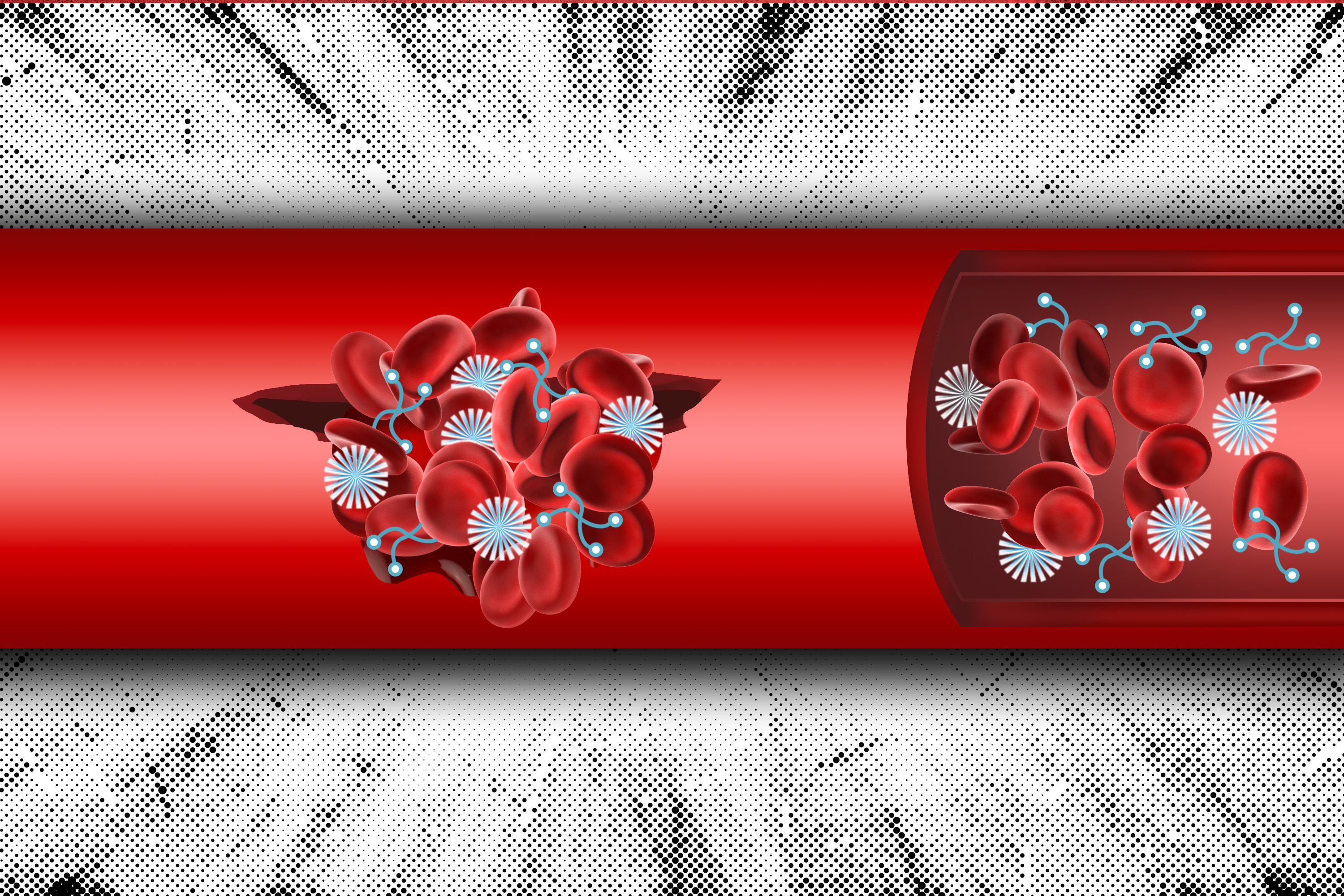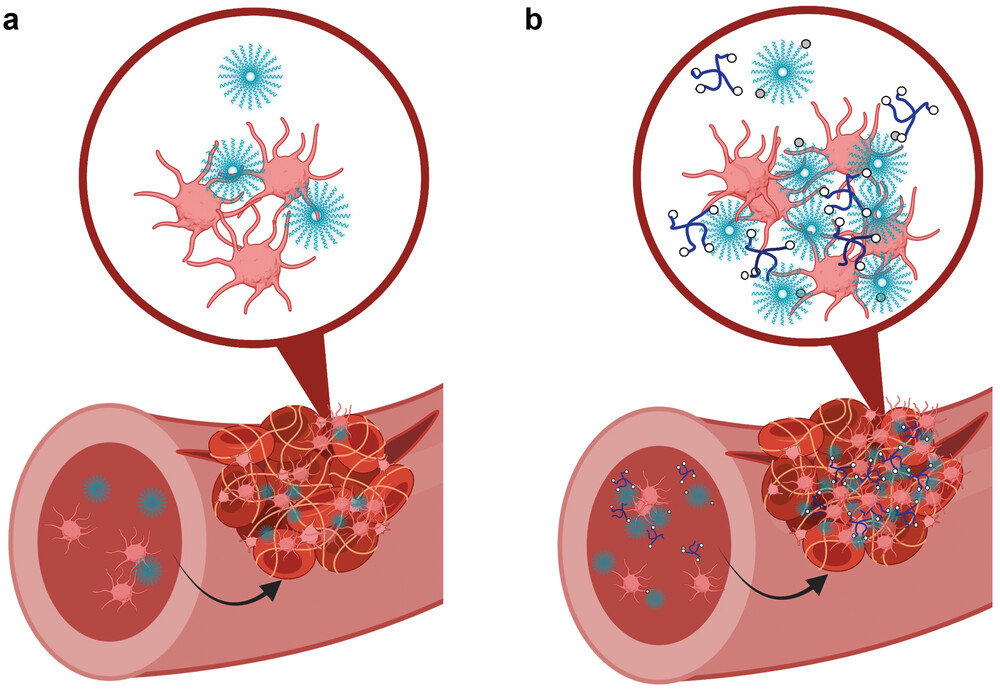Two-component, systemically injectable hemostat

MIT engineers have designed synthetic nanoparticles that can be injected into the body and help form blood clots at the sites of internal injury. Image: Christine Daniloff/MIT

Two-component system designed for wound-targeted crosslinking. a) Single-component system with activated-platelet-binding nanoparticles and b) two-component system with click-functionalized nanoparticles and crosslinking groups for wound-targeted biorthogonal crosslinking. Image: C. Hong, Y. He, P. A. Bowen, A. M. Belcher, B. D. Olsen, P. T. Hammond, Engineering a Two-Component Hemostat for the Treatment of Internal Bleeding through Wound-Targeted Crosslinking. Adv. Healthcare Mater. 2023, 12, 2202756.

